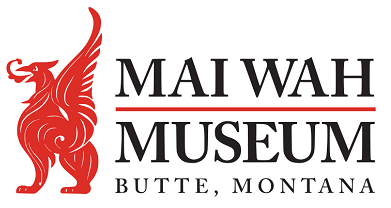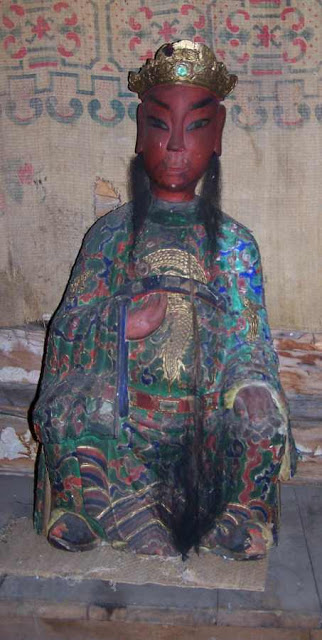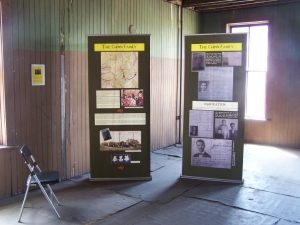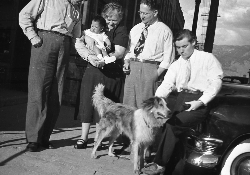The Chinn Family

Introduction
From the 1890s to the 1950s, one of the most prominent Chinese families in Butte was the Chinn Family. They owned and operated the Wah Chong Tai Mercantile and Mai Wah Noodle Parlor, and rented space in the buildings to other Chinese businesses. Following the closure of the businesses in the 1940s, some members of the family continued to live in the buildings for a time. The Mai Wah Society acquired the buildings from the family in the early 1990s. As owner-managers of the Wah Chong Tai Company, the Chinns are directly connected to the Mercantile collection, including the Kwan Gong idol (at right) which became a household god here in the Mai Wah buildings.
Historic Background
The Chin (or Chan) clan is an ancient lineage in China, dating at least to about 220 A.D. We can trace Butte’s Chin family back to about 1830 to the father of Chin Hin Doon. Chin Hin Doon came to America about 1875, and like most of Butte’s Chinese, he left China because of famines and civil unrest; most came from the Taishan region, near Guangzhou (formerly known as Canton) in southeast China. By 1894 he was a partner in the Wah Chong Tai Company, a franchise of Seattle’s Wa Chong Co. He brought his son, Chin Yee Fong, to the United States in 1905 when the son was about 15 years old. Chin Yee Fong attended Butte public schools and became assistant bookkeeper for the Wah Chong Tai Co. about 1910.
By the late 1920s or early 1930s, Chin Yee Fong began to use his Americanized name, Albert Chinn. He was the manager and primary owner of the business and the buildings by that time, and he and his family were living in the buildings as well. The photo at top shows the family about 1926, and includes all the children except for Lily Mae, who was born in 1932. The Chinns became important, well-known, and well-respected members of the Butte community.
The Exhibit
The exhibit includes a touch-screen display with in-depth information about the family, especially some of the immigration questions that traveling Chinese were subjected to. The exclusionary acts prevented all but the select Merchant Class from easy entry into the United States, and even for the Merchant Class to which the Chinns belonged, it was not easy. But it was possible. This is one reason the Chinn family was one of the few in Butte that was a complete family, rather than single males as was the rule.
Artifacts from the family together with banner displays suggest the nature of life in Butte’s Chinatown. Photographs reveal family life, perhaps surprisingly typically American by the 1940s and 1950s (at left, friends gather on the sidewalk in front of the Mai Wah, holding baby Yvonne Chinn, William’s daughter, born in 1950). A detailed interactive time-line forms part of the computer display as well.
The Chinn Family Exhibit was made possible by a grant to the Mai Wah Society from the Montana Cultural Trust; by the Dave Walter Research Fellowship awarded to Richard Gibson by the Montana Historical Society; by financial donations to the Mai Wah in memory of Pearl Chinn So; by donations of artifacts by the Chinn Family; and by Mai Wah volunteers.



